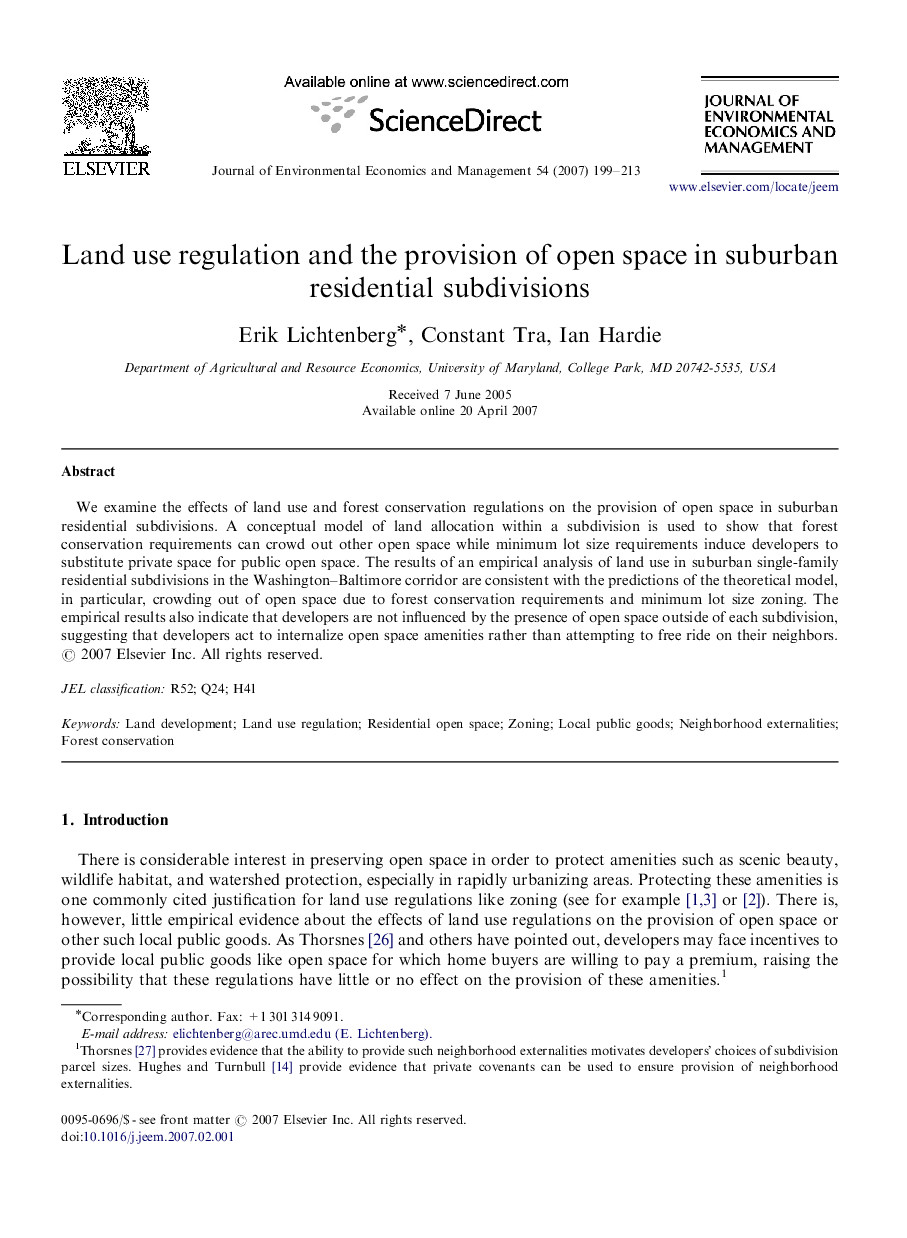| Article ID | Journal | Published Year | Pages | File Type |
|---|---|---|---|---|
| 959110 | Journal of Environmental Economics and Management | 2007 | 15 Pages |
We examine the effects of land use and forest conservation regulations on the provision of open space in suburban residential subdivisions. A conceptual model of land allocation within a subdivision is used to show that forest conservation requirements can crowd out other open space while minimum lot size requirements induce developers to substitute private space for public open space. The results of an empirical analysis of land use in suburban single-family residential subdivisions in the Washington–Baltimore corridor are consistent with the predictions of the theoretical model, in particular, crowding out of open space due to forest conservation requirements and minimum lot size zoning. The empirical results also indicate that developers are not influenced by the presence of open space outside of each subdivision, suggesting that developers act to internalize open space amenities rather than attempting to free ride on their neighbors.
